Grey Plovers, often mistaken for common sandpipers, stand out as one of the most intriguing species in the avian world. Their stark grey plumage, accentuated by striking black underparts during breeding, creates a captivating sight.
Renowned for their remarkable migratory prowess, these wading birds journey from Arctic breeding grounds to Southern Hemisphere beaches, covering vast distances with astonishing endurance.
Noteworthy for their adaptability, Grey Plovers thrive not only along seashores but also in fields and marshes far from coastal areas.
Whether combing sandy shores or observing grassy plains, encountering these versatile birds is a testament to their remarkable resilience and charm.
Physical Characteristics of Grey Plovers
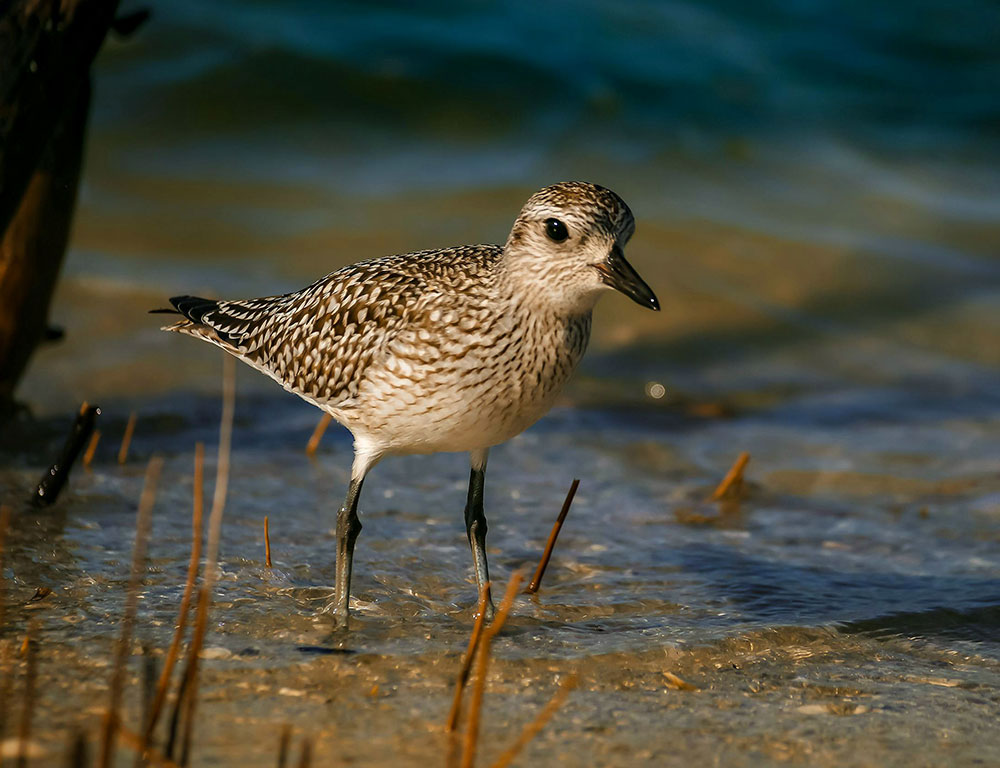
The Grey Plover, scientifically known as Pluvialis squatarola, is a medium-sized shorebird with distinct physical characteristics that make it easily recognizable:
Plumage
The Grey Plover displays striking seasonal variations in plumage. In summer, it boasts silver and black spotted upperparts, along with a black face, neck, and belly. Come winter, it sheds the black feathers, adopting a browny-grey appearance. Regardless of season, its rump remains white, with distinctive black ‘armpits’ visible during flight.
Size
Grey Plovers typically measure between 10.6 to 11.8 inches (27-30 cm) in length, making them medium-sized birds in the plover family.
They have a wingspan ranging from 28 to 29 inches (71-73 cm). Despite their relatively small size, they are robust fliers capable of long migrations.
Weight
These birds weigh approximately 9.877-12.17 ounces (280-345 grams), which is relatively light considering their size. This weight allows them to undertake their extensive migratory journeys efficiently.
Body Structure
Grey Plovers have a compact body with proportionally long wings and a short neck. Their legs are relatively short but sturdy, enabling them to run swiftly across various substrates, including sandy beaches and mudflats.
They possess a distinctive round head atop their stout neck, which is characteristic of many plover species.
Sexual Dimorphism
During the breeding season, male Grey Plovers exhibit more pronounced black underparts than females, which helps distinguish between the sexes. This sexual dimorphism is particularly noticeable during courtship displays and mating rituals.
Bill and Eyes
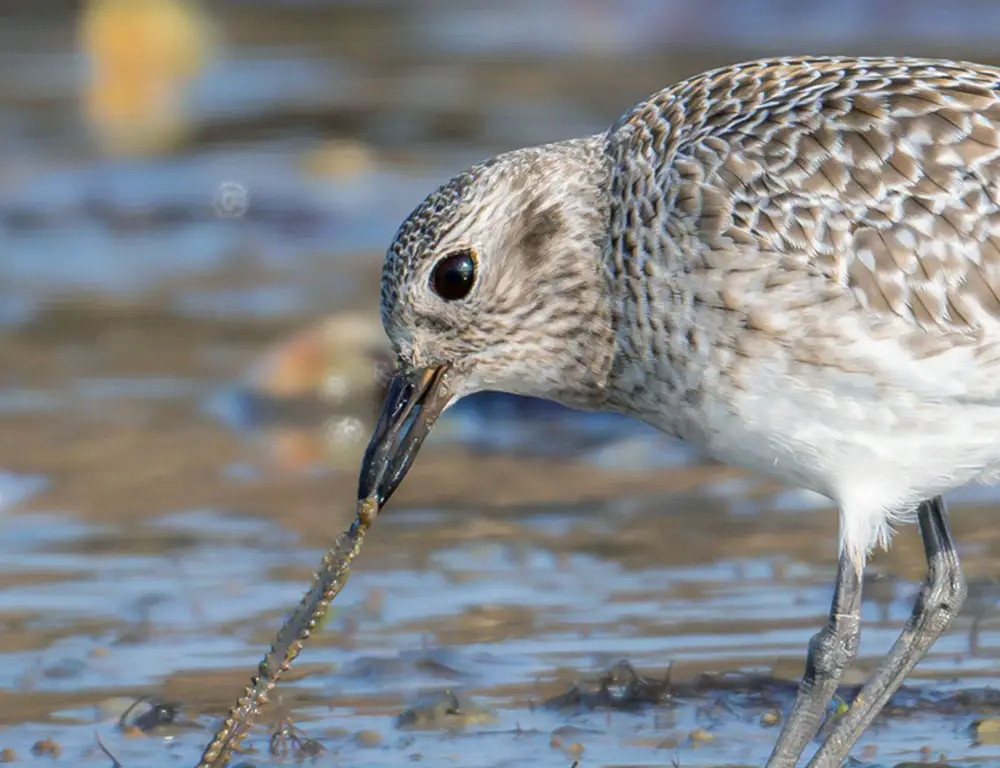
Grey Plovers have short, stout bills that are slightly downturned, ideal for probing invertebrates in sandy or muddy substrates. Their eyes are large and dark, providing excellent visual acuity for foraging and detecting predators.
Habitat and Distribution of Grey Plover
The Grey Plover, also known as the Black-bellied Plover in North America, is a highly adaptable shorebird with a wide distribution across different continents.
Here’s an overview of its habitat and distribution:
Breeding Habitat
The Grey Plover thrives in Arctic islands and coastal regions spanning the northern coasts of Alaska, Canada, and Russia during breeding season. Preferring dry, open tundra with excellent visibility, they construct nests directly on the ground.
These nests consist of shallow gravel scrapes, providing minimal but essential shelter. Such habitats offer the necessary conditions for successful breeding and rearing of their young amidst the rugged Arctic landscape.
Migration Routes
Grey Plovers are migratory birds, undertaking long-distance journeys between their breeding and wintering grounds. They migrate from their Arctic breeding grounds to warmer regions during the winter months. Their migration routes typically span continents, with stopover sites where they rest and refuel.
Wintering Habitat
Grey Plovers occupy various coastal habitats in temperate and subtropical regions during the non-breeding season. They can be found along sandy beaches, mudflats, estuaries, salt marshes, and coastal lagoons.
These coastal habitats provide abundant food resources, including marine invertebrates such as crustaceans, mollusks, and worms, which are essential for their survival during the winter months.
Global Distribution
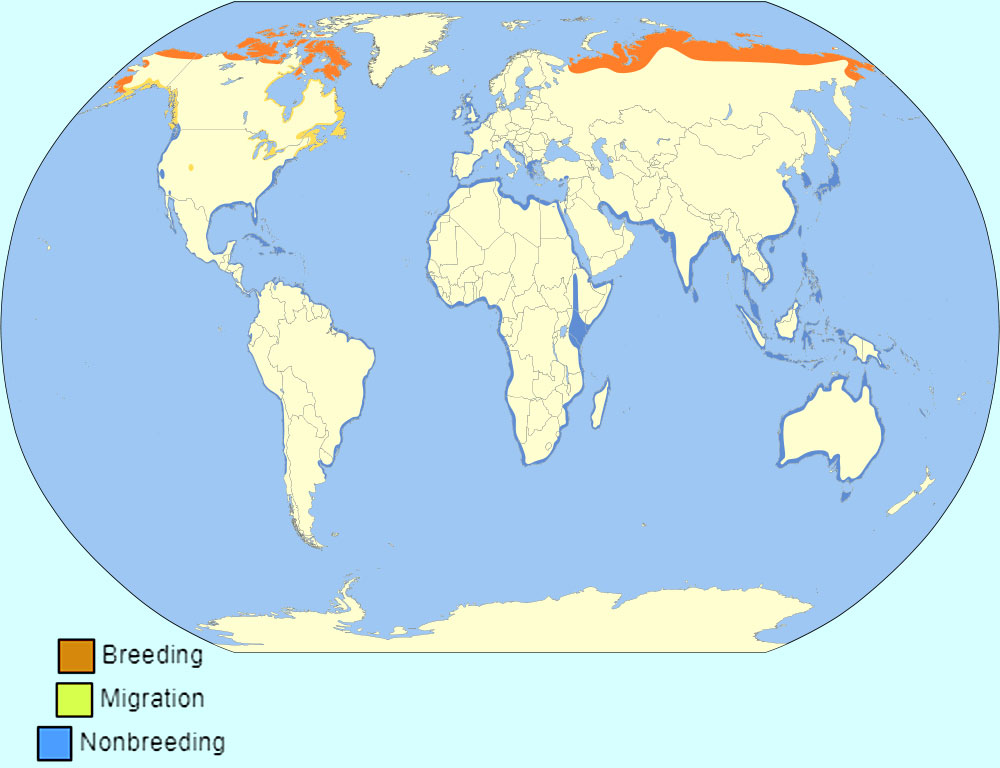
Grey Plovers have a broad distribution range, spanning across North America, Europe, Asia, Africa, and Australia. In North America, they breed in Alaska and northern Canada, while in Europe and Asia, they breed in northern regions such as Scandinavia and Siberia.
During migration and winter, they can be found along coastlines and estuaries throughout their range, including regions as far south as South America, Africa, and Australia.
Habitat Adaptability
One of the remarkable traits of Grey Plovers is their ability to adapt to various habitats along their migration route. They utilize a range of coastal environments for foraging and resting, including both natural and human-altered habitats. This adaptability allows them to thrive in diverse ecosystems and ensures yearly survival.
The Behavior of Grey Plover
The behavior of the Grey Plover, or Black-bellied Plover in North America, is as fascinating as its physical characteristics and habitat preferences.
Here’s an insight into the behavior of this remarkable shorebird:
Feeding Behavior
Grey Plovers are opportunistic feeders, primarily foraging for invertebrates such as worms, insects, crustaceans, and mollusks.
They employ a distinctive feeding technique known as the “run-stop-peck” method:
- Run: Grey Plovers hustle quickly across the ground, covering considerable distances in search of prey.
- Stop: Suddenly halting in their tracks, they remain alert, scanning the ground for potential food items.
- Peck: Upon spotting prey, they swiftly peck at it with their slender, slightly downturned bills, precisely capturing it.
Migratory Behavior
Grey Plovers undertake one of the longest migration flights among shorebirds, traveling thousands of kilometers between their Arctic breeding grounds and wintering areas in temperate and subtropical regions. They navigate using a combination of celestial cues, landmarks, and geomagnetic fields, displaying remarkable navigational abilities.
Social Behavior
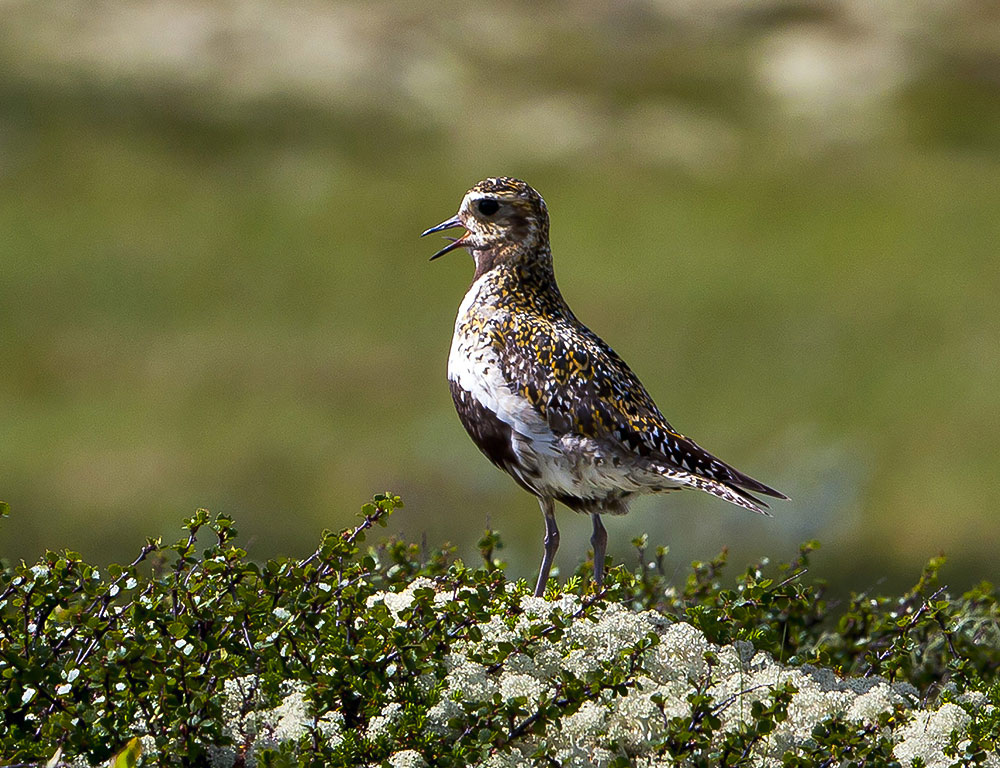
Grey Plovers exhibit both solitary and gregarious behavior, depending on the season and context. During the breeding season, they may form monogamous pairs and defend territories against intruders.
Outside the breeding season, they gather in flocks, often roosting and foraging together along coastal habitats.
Breeding Behavior
Breeding pairs of Grey Plovers engage in courtship displays, which may involve aerial flights, vocalizations, and ground-based rituals. Once paired, they establish nesting territories on the Arctic tundra, where females lay eggs in shallow scrapes lined with vegetation or pebbles. Both parents incubate the eggs and care for the chicks after hatching.
Anti-predator Behavior
Like many shorebirds, Grey Plovers exhibit vigilant behavior to detect and evade potential predators. They are alert to aerial predators, such as birds of prey, and terrestrial threats, such as mammalian predators.
When threatened, they may take flight or seek refuge in nearby cover to avoid predation.
Communication
Grey Plovers use a variety of vocalizations and visual signals to communicate with conspecifics, including calls, displays, and body postures.
Vocalizations may include alarm calls to alert nearby individuals of potential threats or contact calls to maintain social cohesion within flocks.
Conservation Status of Grey Plovers
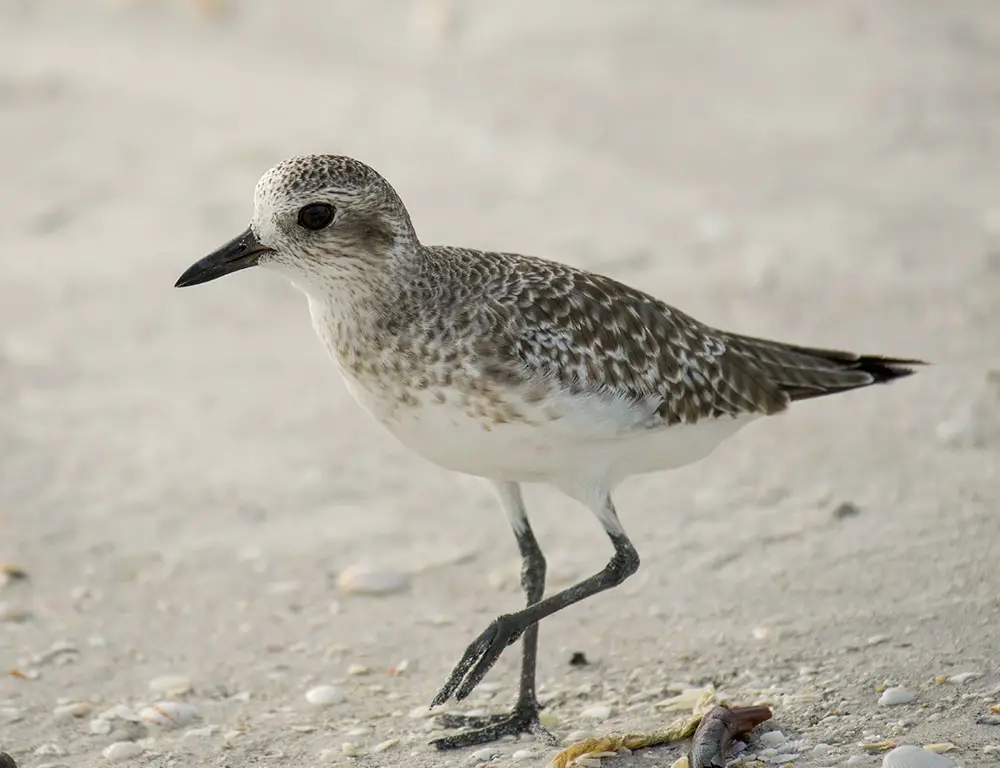
The conservation status of the Grey Plover, also known as the Black-bellied Plover in North America, is of concern due to various environmental pressures affecting its breeding, migratory, and wintering habitats.
Here’s an overview of its conservation status:
IUCN Red List Status
The Grey Plover is currently classified as “Least Concern” by the International Union for Conservation of Nature (IUCN). This classification indicates that the species is not presently facing imminent extinction. However, it does not imply that the species is not vulnerable to threats or need conservation attention.
Population Trends
While the Grey Plover has a widespread distribution and a relatively sizeable global population, there are indications of population declines in certain regions. These declines are attributed to habitat loss, degradation, and other anthropogenic pressures.
Habitat Loss and Degradation
One of the primary threats to Grey Plover populations is habitat loss and degradation, particularly in their breeding and wintering habitats. Climate change alters Arctic tundra ecosystems, affecting breeding pairs’ nesting success and food availability.
Coastal development, pollution, and disturbance are impacting wintering habitats, reducing foraging opportunities, and roosting sites.
Climate Change
Climate change significantly threatens Grey Plovers as it alters weather patterns, sea levels, and ecosystem dynamics in breeding and wintering areas.
Rising temperatures, changing precipitation patterns, and habitat shifts can disrupt breeding behavior, migration timing, and food availability, impacting population dynamics and survival rates.
Human Disturbance
Grey Plovers are vulnerable to human disturbance at breeding, migratory, and wintering sites. Recreational activities, coastal development, and disturbance from vehicles and aircraft can disrupt nesting activities, foraging behavior, and roosting patterns, reducing reproductive success and increasing stress levels.
Conservation Efforts
Conservation efforts for Grey Plovers include habitat protection, restoration, and management initiatives to preserve critical breeding, stopover, and wintering habitats.
International collaborations and agreements are essential for addressing conservation challenges across migratory flyways and coordinating efforts to mitigate threats.
Conclusion
The Grey Plover is an extraordinary bird species with remarkable migratory patterns and unique behaviors. From traversing vast distances between Arctic breeding grounds and wintering sites to showcasing striking plumage during the breeding season, these birds captivate researchers and enthusiasts alike.
Despite their widespread distribution, much about their ecology remains shrouded in mystery, including their exact population numbers. As climate change poses increasing threats to their habitats, conservation efforts become crucial for their survival.
With their resilience in harsh environments and incredible endurance during long flights, Grey Plovers continue to inspire fascination and admiration.
By understanding and protecting these remarkable creatures, we ensure the preservation of their enigmatic lifestyle for generations to come.